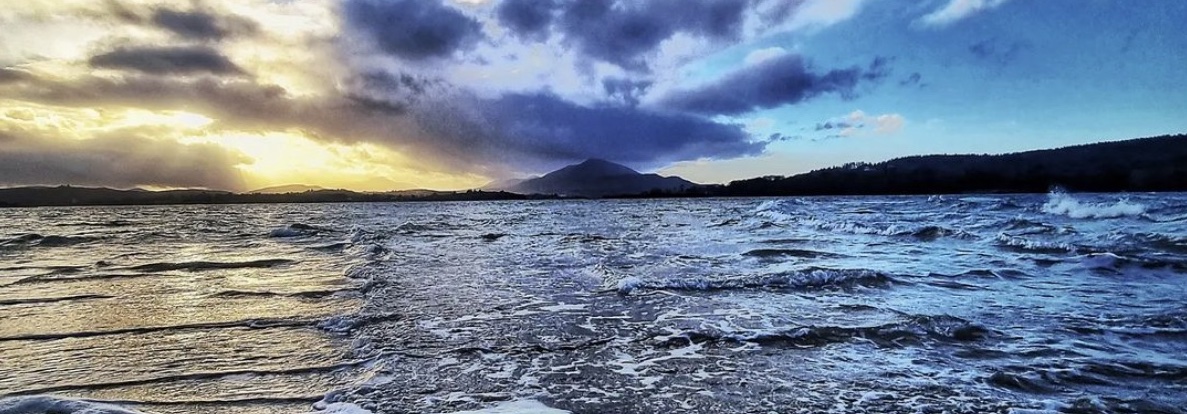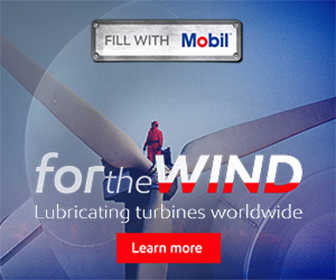Supercharged Wind Energy Sector in Ireland Attracts US Companies
.jpg) As world leaders debated the best approaches to dealing with global warming at the United Nations Climate Change Conference, COP26, in Glasgow, some leading American companies are already anticipating the future and investing in renewable energy sources while also benefitting their bottom line. A particularly appealing power source is wind energy, which has seen tremendous growth in recent years. China, the United States, Germany and India are the four top nations in terms of their wind capacity, with the US Interior Department just announcing plans to build seven major offshore wind farms along America's coasts to generate enough power to supply 10 million homes by 2030.
As world leaders debated the best approaches to dealing with global warming at the United Nations Climate Change Conference, COP26, in Glasgow, some leading American companies are already anticipating the future and investing in renewable energy sources while also benefitting their bottom line. A particularly appealing power source is wind energy, which has seen tremendous growth in recent years. China, the United States, Germany and India are the four top nations in terms of their wind capacity, with the US Interior Department just announcing plans to build seven major offshore wind farms along America's coasts to generate enough power to supply 10 million homes by 2030.
While this power resource is limitless, tapping into it costs money, which is why some large US firms have been exploiting the generous R&D tax credits and other financial support available from the Irish government for foreign companies investing in its business sector. When it comes to renewable energy production, Ireland is already a renewable energy powerhouse with the third highest globally of per capita wind energy capacity according to International Renewable Energy Agency (IRENA). It intends to more than double the amount of renewable electricity available over the next decade, utilizing the help of overseas companies to meet its goals and in the process fueling an economy that has continued as the growth leader in Europe for years. Ireland is on track to record double-digit growth in 2021, increasing at three times the EU average just between April and June.
For US companies (i.e. Amazon, Facebook/Meta and Microsoft) that have long-established business operations in Ireland, investing in wind energy to power their Irish server farms and offices not only makes business sense but offers positive public relations via demonstrating corporate commitments to the environment. For example, Amazon has already launched an Irish wind farm -- its first outside the United States -- and has two more utility-scale renewable projects in the pipeline there that will supply power to its operations, while also delivering electricity to 185,000 Irish homes annually.
Becoming the world's largest corporate buyer of renewable energy last year, Amazon is like other American firms with wind projects in Ireland in that they collaborate with renewable power plant operators through corporate power purchase agreements to realize their energy goals, with funding assistance available from the Irish government. Facebook/Meta will send clean power into the Irish grid while also supplying electricity to its operations through a new wind farm project to be completed next year. Meanwhile, Microsoft was an early adopter in Ireland of wind farms to power its local operations, having inked a deal in 2017 with GE that gave the company energy available for trading purposes while also testing new batteries designed to deliver energy back to the grid.

Wind turbines have become common in Europe, underscoring the continent's commitment to developing non-polluting energy sources. Currently, 48 percent of Denmark's electricity is supplied by wind power. At 38 percent is Europe's number-two user, Ireland. Today's wind farms are primarily land based, but this is expected to change significantly in the future as a wide spectrum of offshore wind turbines are built. These offshore wind farms have no obstacles like hills, buildings, trees that obstruct the flow of air. For example, a modern onshore wind turbine built with the latest technology would power about 3,000 homes, whereas a single offshore wind turbine would deliver energy for about 10,000 homes - a compelling solution as Ireland scales up its green energy over the coming decades.
Offshore wind projects are well suited to Ireland, a breeze-abundant nation that boasts 900 miles of coastline and a sea area seven times larger than its land mass, offering enticing opportunities for US companies seeking profit potential in the European Union. According to its Climate Action Plan, Ireland aims to develop 5 GW of offshore wind by 2030 and reduce total carbon emissions by 51 percent by 2030, compared to 2018. This is considered the most aggressive de-carbonization targets of any country in the world. It also commits Ireland to climate neutrality by 2050. Helping achieve this goal will be overseas companies with Irish operations that tap into Ireland's well-known financial incentives to start using wind power for their local and European facilities, as well as to send power to the grid for use by consumers and others. There are currently applications in place to develop Ireland's offshore wind capacity by 20GW in the coming years.
The new generation of offshore wind projects are big, complex projects requiring new laws, regulations, and infrastructure to facilitate these efforts. Besides pushing forward new legal initiatives, the Irish government just announced it will hold at least three offshore auctions as part of its commitment to have 80 percent of its electricity sourced from renewables by 2030. Along with funding corporate energy research efforts and offering grants and incentives for companies doing business in Ireland, these activities will enable a green, clean energy future for Ireland and the many foreign companies doing business there.

Ian O'Hora serves as the Global Head of Engineering & Green Economy at IDA Ireland.
IDA Ireland | www.idaireland.com
Author: Ian O’Hora












